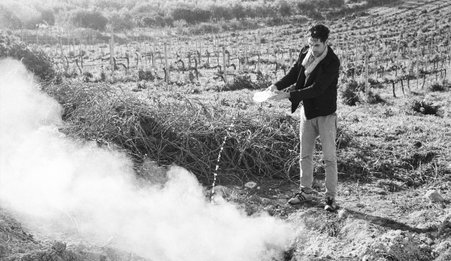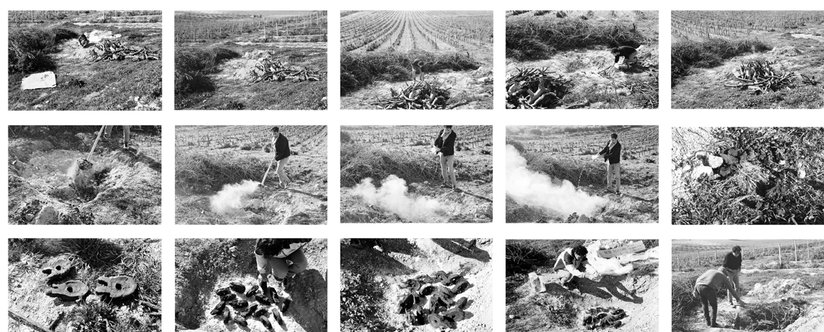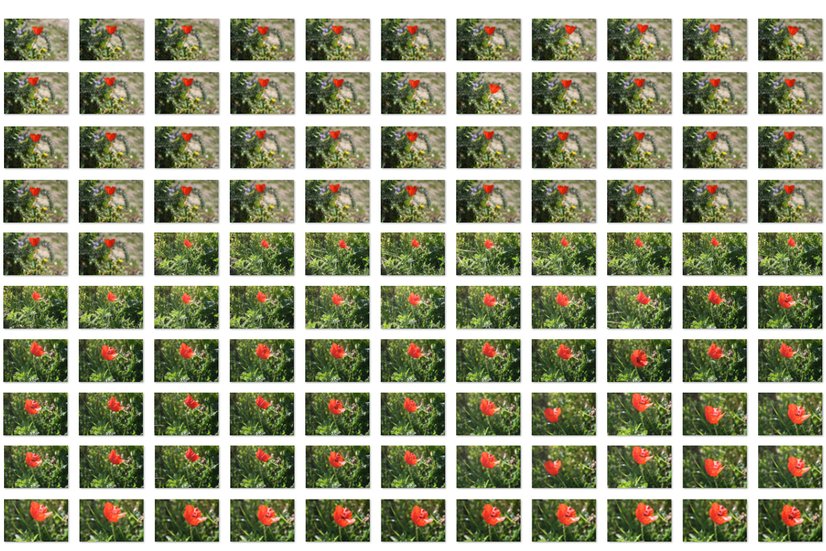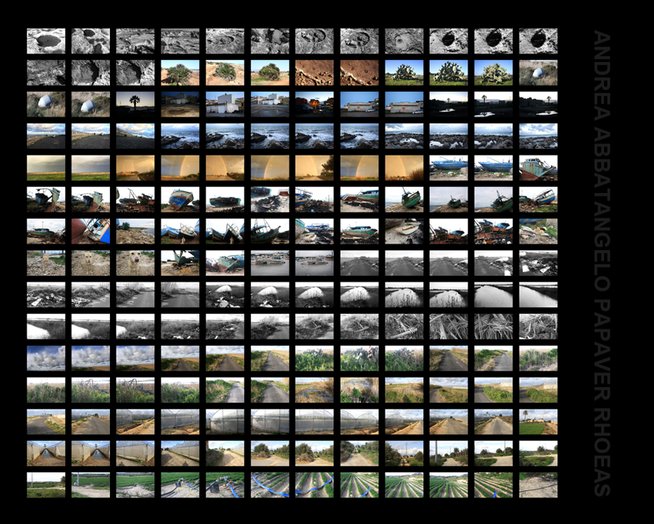ANDREA ABBATANGELO
The Corn Poppy, (latin Papaver Rhoeas), is a plant of harvest and depends on agricultural practices by human activity in the area. It settles on the ground plowed by the plow or turned from agricultural machinery: it belongs to the series of battles herbs, so its persistence has depended and threatened at the same time by the human organization of the territory: its pro- liferation stems from human activity, rationalization of the landscape as well as the threat to its extinction which escapes to an innate power of regeneration.
Papaver Rhoeas is an arti- stic project focused on per- formance, sculpture, land - art and based on observession and live action; the aim
PAPAVER RHOEAS
Noto - Sicily (IT) January - February 2017
I envisage that an art practice that focuses on the complex and conflictual relationship betwe- en arts and sustainility could increase the interest of the communities and governements to the those topics and to the art system itself. In Papaver Rhoeas I was aimed to encourage debate around societal concerns, which indeed included the relationship of art and its sustainability and also the role of education - but also alternative practice of self-cultivation.
However, arts practice based on inclusion and sustainability underlines the ethics and aesthetics of socio-material and interactions between resources and production.
is to reconcile and based on observession and live action; the aim is to reconcile my artistic pro-duction with ecological sustainability. In the last years I have been formulating the topic that my sculp- tures are small portions of landscape borrowed. I borrow clay from hills or mountains, where it is easy to dig and clean it, modell it and firing the clay in the field, in order to give the ground the ashes of the arched wood, natural fertilizers for the surrounding plants.
The aim of the live action consists of a passage through a landscape, an intermission that speaks of the settlement and migrations of matter and peoples. Departing from Friedrich Hölderlin’s sentence “Where the danger is, also grows the saving power”, I’m working on a a metaphor that sums up the relationship between the landscape and human intervention in the territory
Papaver Rhoeas
2017
firing the clay in the nature, documentation (b/n 35 mm)
I been inspired by Gilles Clément, one of the landscapers who have contributed to the evolution of garden idea in recent times. His practice is focused on “working with nature, not against it”, has changed the way of rapping to the garden, shifting interest from aesthetics to the wonder of life and biodiversity. At the end of the 1970s, Clément acquired an aban- doned land in the center of France, an unpaved area near the places of his childhood. In this land of La Vallée he builds his house with his own hands and totally self-sufficient. Vallée is a kind of ‘paradise’ (paraiso, ancient term for defining the garden): traci of spontaneous vegetation, insects, aviofauna and small animals. Landscape courses had taugh thimto eliminate (often with the use of chemicals) all that hindered the rational thinking of the designer. Here Clément decides to follow a new path: to valorize what was already present without destroying anything.It this begins to apply some of the concepts that will make it famous all over the world. The moving garden, in fact, begins right in this flap of land: having to trace a path to enter the vegetation, to avoid cutting shrubs and spontaneous plants growing on its path, decides to mark zigzagged lines to circum- vent growth and the movement of vegetation. Thus, the gardener no longer imposes a form, but adapts tothepreexistingshapesofnature, leaving the place’s energy to make its course, constantly changing
the surrounding landscape.
(from a Clément’s interview with C. Zanfi, october 2017)
On the left from the top of the page:
Papaver Rhoeas, Bi-frontal sculture
2017
clay, 35 x 30 x 25 cm
Guido is a Vulcan
2014
clay 25 x 20 x 21 cm
PAPAVER RHOEAS IN SICILY
"Where is the danger is, also grows the saving power"
Papaver Rhoeas is an artistic project focused on performance, sculpture, land art and based on observession and live action; the aim is to reconcile my artistic production with ecological sustainability. In the last years I have been formulating the topic that my sculptures are small portions of landscape borrowed. I borrow clay from hills or mountains, where it is easy to dig and clean it, modell it and firing the clay in the field, in order to give the ground the ashes of the arched wood, natural fertilizers for the surrounding plants.
The aim of the live action consists of a passage through a landscape, an intermission that speaks of the settlement and migrations of matter and peoples. Departing from Friedrich Hölderlin's sentence “Where the danger is, also grows the saving power”, I'm working on a a metaphor that sums up the relationship between the landscape and human intervention in the territory.
The Corn Poppy, Papaver Rhoeas, is a plant of harvest and depends on agricultural practices by human activity in the area. It settles on the ground plowed by the plow or turned from agricultural machinery: it belongs to the series of battles herbs, so its persistence has depended and threatened at the same time by the human organization of the territory: its proliferation stems from human activity, rationalization of the landscape as well as the threat to its extinction which escapes to an innate power of regeneration.
Andrea Abbatangelo
Papaver Roeahs,
Documentation
About 7000 photos has been produced between January and February 2017 and a part of them are edited in a short video that has been presented at Research Pavilion, at Sala del Camino in Venice.
Andrea Abbatangelo
Papaver Roeahs
lambda, 40 x 50 cm
Edition of 3 + 1





